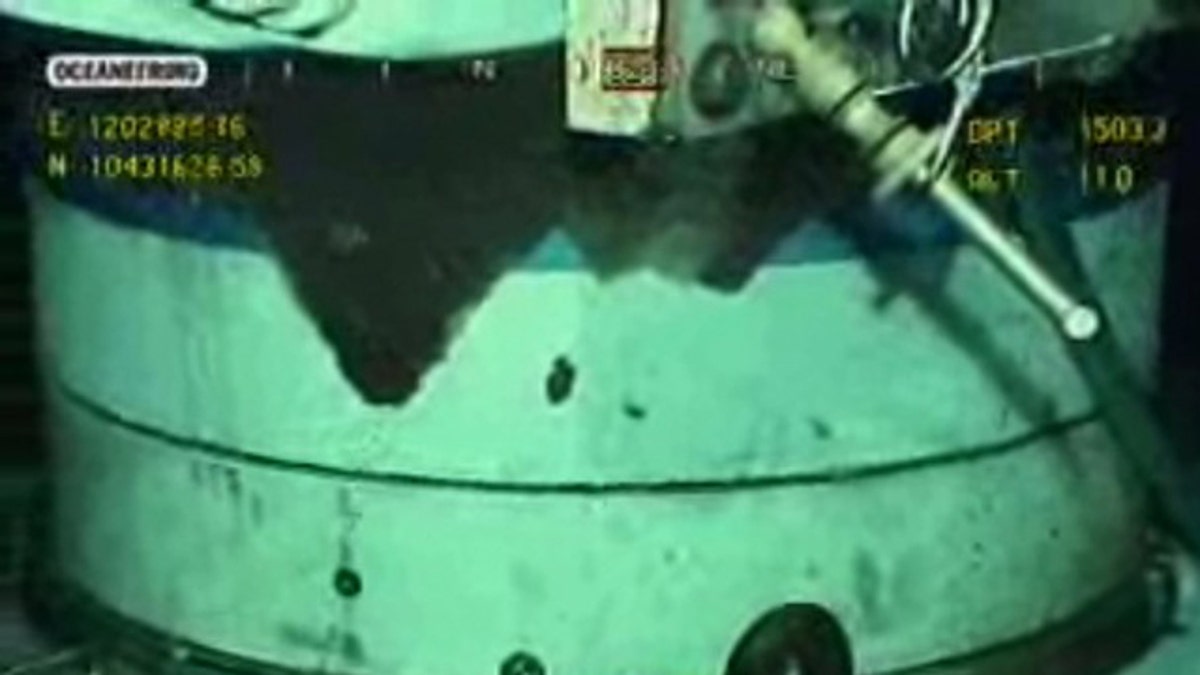
July 24: Bubbles rise from the new containment capping stack in this image captured from a BP live video feed from the Gulf of Mexico. (Reuters)
NEW ORLEANS -- High seas on the Gulf of Mexico forced BP PLC on Monday to delay operations for up to three days to raise the piece of equipment from the seabed that failed to prevent the massive oil spill, the U.S. government said.
Retired Coast Adm. Thad Allen, the government's point man on the spill response, told reporters in a conference call that waves were 6-8 feet tall and crews were worried about the potential risk of suspending hulking pieces of equipment from a crane underwater while the waves were rocking.
He said the operations were expected to be pushed back 2-3 days, meaning it could be as late as Thursday before engineers begin to remove the temporary cap that stopped more oil from flowing into the sea in mid-July and the failed blowout preventer, which is a key piece of evidence in ongoing investigations. The cap will be stored on the seafloor nearby. It could take 24 hours to slowly lift the blowout preventer from the water.
A new blowout preventer will be placed atop the well once the failed one is raised. After that, the goal is to drill the final 50 feet of a relief well.
Engineers will then pump in mud and cement to permanently plug the well that gushed oil. The final plugging of the well was expected to start after Labor Day, but Allen said Monday that will be delayed as well because of the weather.
"We are in a weather hold right now," Allen said from aboard the Development Driller III vessel, which is the vehicle for drilling the primary relief well.
Allen said he also would be visiting the Helix Q4000, which is the vessel that will lift the blowout preventer and turn it over to a 12-person evidence team from the federal government.
The Deepwater Horizon rig exploded on April 20 and sank, killing 11 workers and spewing 206 million gallons of oil from BP's undersea well. BP was operating the rig, which was owned by Transocean Ltd.
The leak was first contained when engineers were able to place a cap atop BP's well. Workers then pumped mud and cement in through the top in a so-called "static kill" operation that significantly reduced pressure inside the well. Officials don't expect oil to leak into the sea again when the cap is removed, but Allen has ordered BP to be ready to collect any leaking crude just in case.
The 50-foot, 600,000-pound blowout preventer -- which was designed to prevent such a catastrophe -- will be taken out of the water with the well pipe still inside to ensure the pipe doesn't break apart any more than it already has.
Keeping the blowout preventer intact is important because it is key to ongoing investigations into the cause of the disaster.

